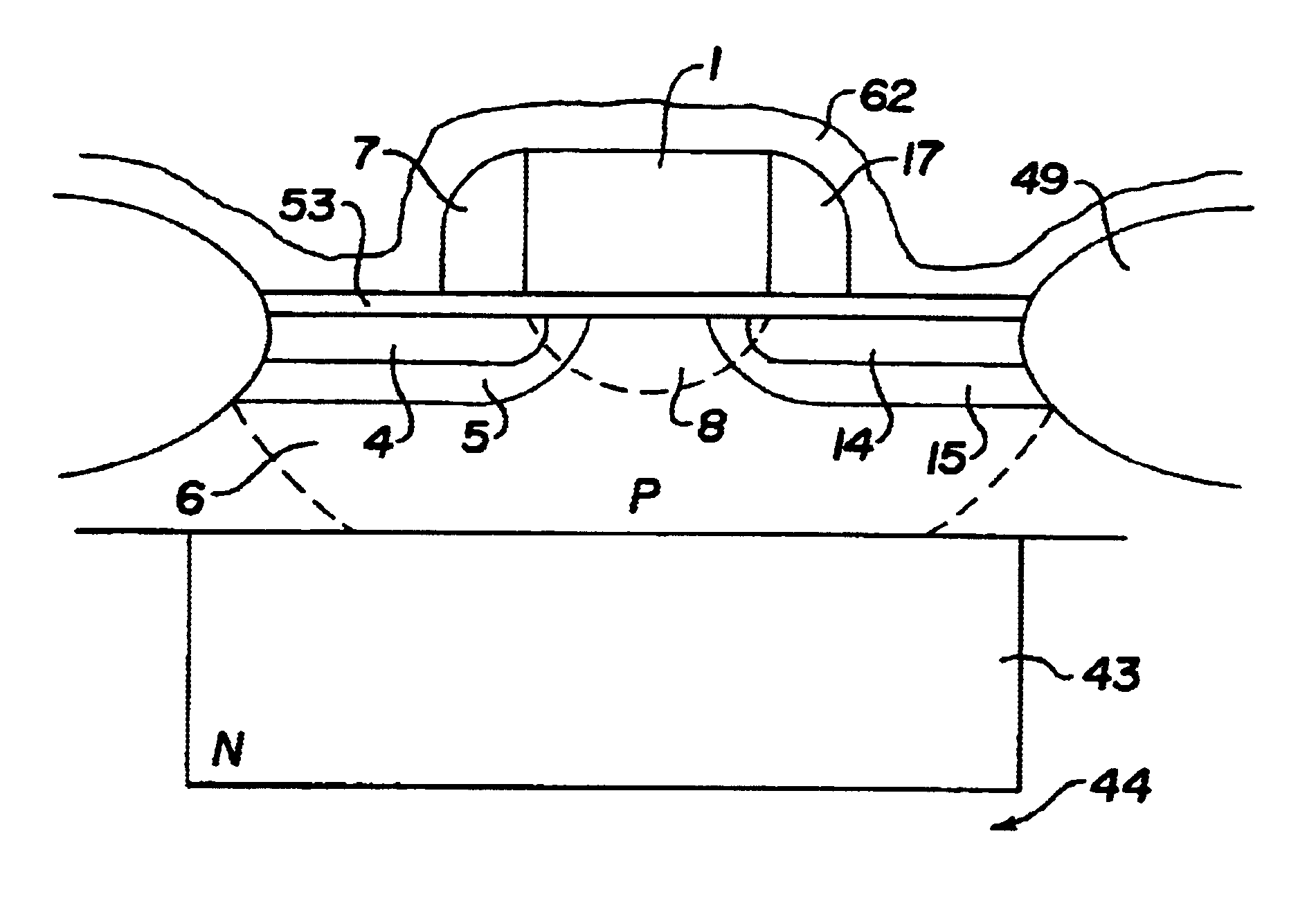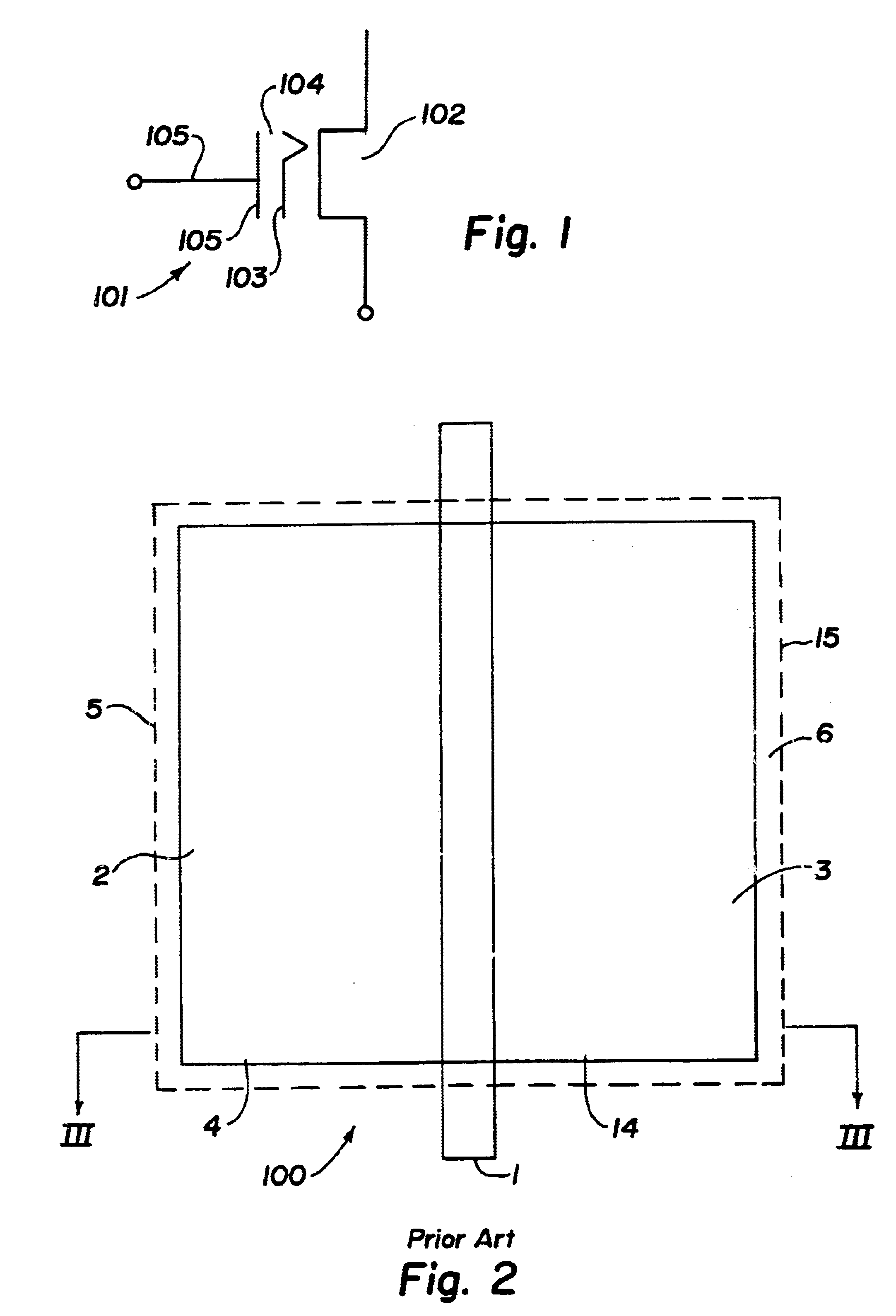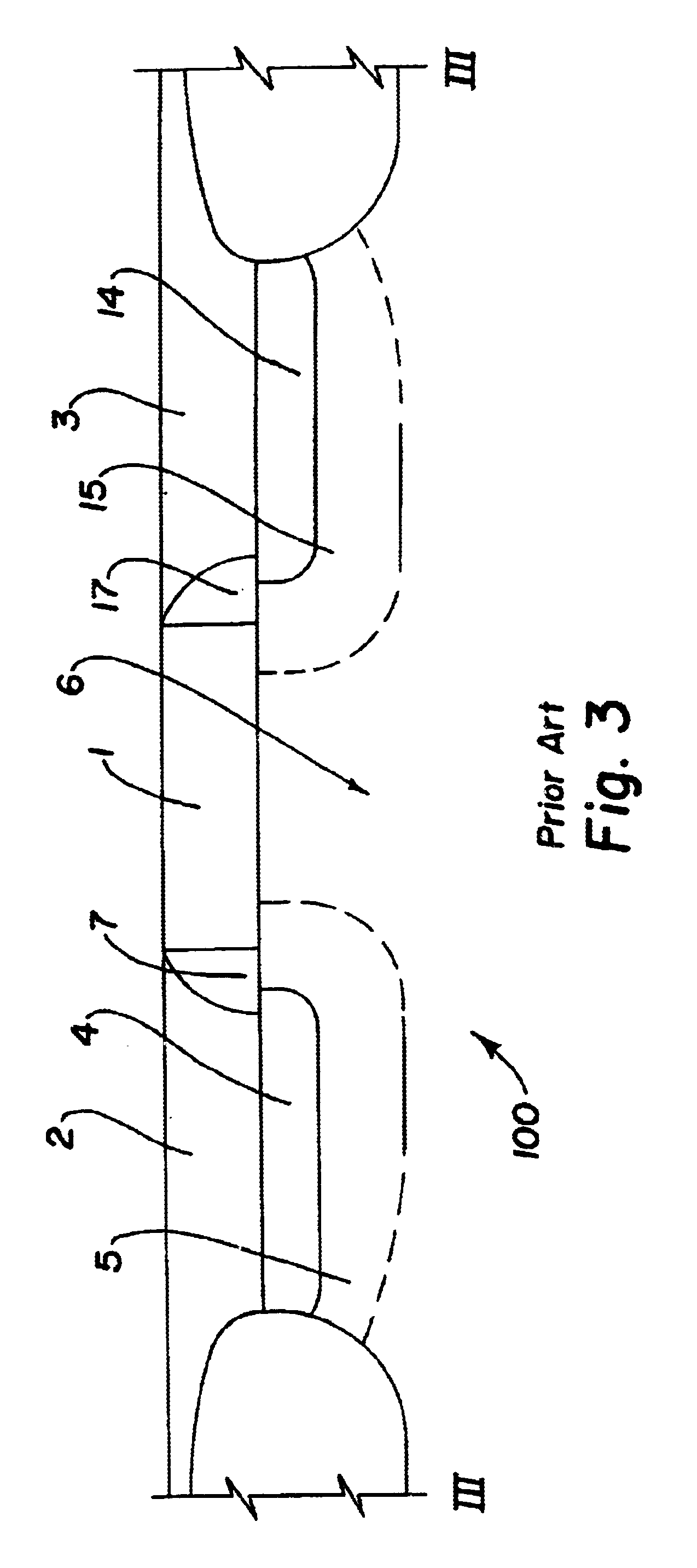Enhanced EPROM structures with accentuated hot electron generation regions
a technology of eprom and hot electron generation, which is applied in the direction of semiconductor devices, electrical apparatus, transistors, etc., can solve the problems of sub-threshold voltage degradation, sub-threshold voltage degradation and transconductance degradation, and circuit failures over the life of the circuit, so as to increase the generation of hot electrons, reduce the voltage, and ensure the effect of stability
- Summary
- Abstract
- Description
- Claims
- Application Information
AI Technical Summary
Benefits of technology
Problems solved by technology
Method used
Image
Examples
Embodiment Construction
Referring to FIG. 1, there is shown a schematic of an EPROM cell 101 according to the invention. The EPROM cell 101 includes a NMOS transistor 102 integrated with capacitor 104. A control gate 105 is connected directly to one of the plates of a capacitor 104. A floating gate 103 is located between the control gate 105 and the source and drain of transistor 102.
FIGS. 2 and 3 are a top view and a sectional view as seen from lines III--III of a prior art CMOS and BICMOS device structures 100 manufactured on a silicon substrate. The CMOS and BICMOS device structures 100 includes a poly gate 1, a drain 2, and a source 3. The drain 2 and source 3 each include a N.sup.+ region 4 and 14 on the surface of a P well 6. Oxide spacers 7 and 17 are located between the source 3 and drain 2 and around the poly gate 1. Dopant grading is provided between the P well 6 and the N.sup.+ region 4 and 14 of the source 3 and drain 2 by lightly doped drains (Nldd) 5 and 15.
This grading is necessary for relia...
PUM
 Login to View More
Login to View More Abstract
Description
Claims
Application Information
 Login to View More
Login to View More - R&D
- Intellectual Property
- Life Sciences
- Materials
- Tech Scout
- Unparalleled Data Quality
- Higher Quality Content
- 60% Fewer Hallucinations
Browse by: Latest US Patents, China's latest patents, Technical Efficacy Thesaurus, Application Domain, Technology Topic, Popular Technical Reports.
© 2025 PatSnap. All rights reserved.Legal|Privacy policy|Modern Slavery Act Transparency Statement|Sitemap|About US| Contact US: help@patsnap.com



